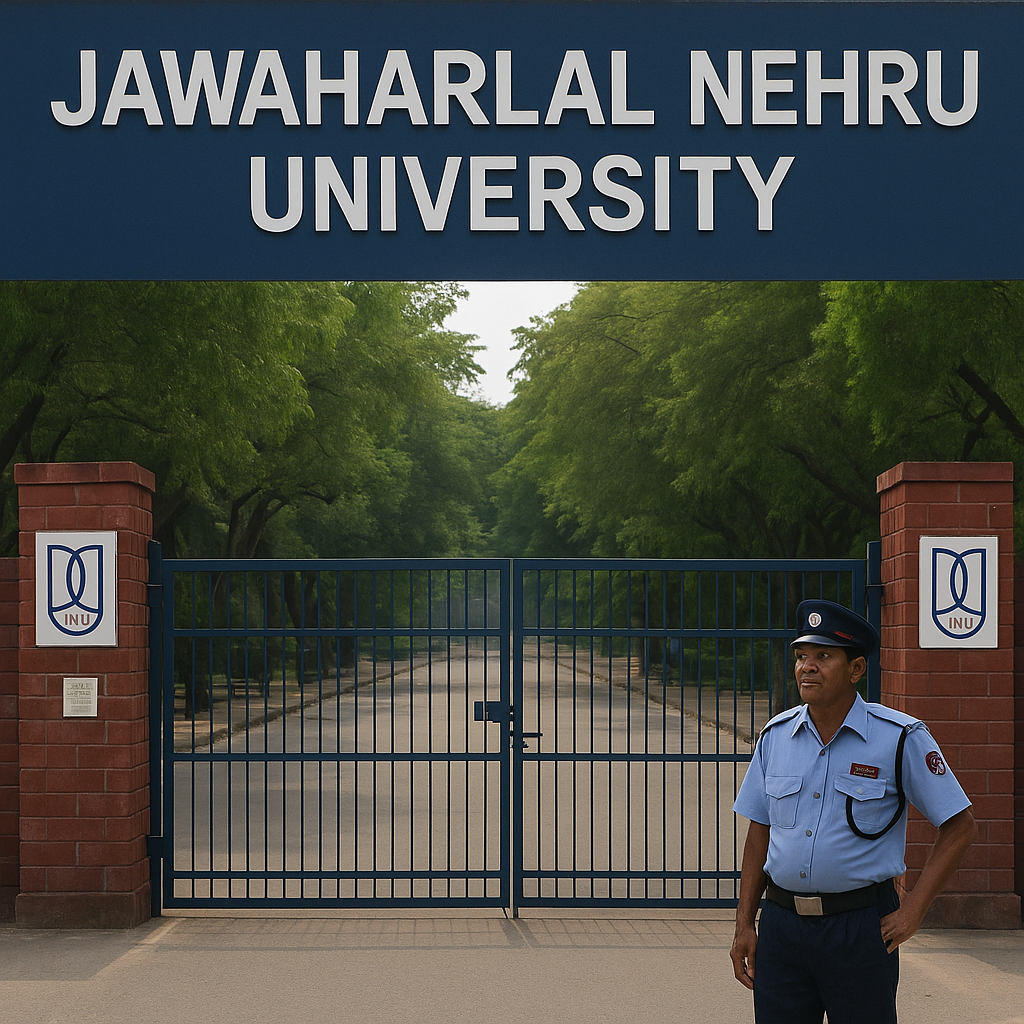In a notable shift from national-level entrance norms, Jawaharlal Nehru University (JNU) has decided to bring back its in-house entrance examinations for admissions to two of its academic centres. The change, approved by the Academic Council on June 28, 2025, will be implemented from the 2025–26 academic session and applies specifically to:
- The School of Sanskrit and Indic Studies (SSIS)
- The Special Centre for Integrated Studies (SCIS)
This decision has stirred attention across academic circles and among aspirants who had grown accustomed to the centralized CUET (Common University Entrance Test) framework introduced by the UGC in 2022.
Why JNU Is Moving Away from CUET—At Least Partially
Over the last three academic cycles, JNU experienced a consistent decline in admissions for specific programs, particularly in Sanskrit studies and its integrated BA-MA offerings.
According to a senior official from the university:
“We noticed a disturbing pattern—students who were qualifying via CUET had little actual interest in Sanskrit or integrated programs. Many left midway or lacked the academic preparedness for these specialized fields.”
The situation was dire enough that multiple admission rounds were conducted, yet seats remained vacant in both centres. This raised serious concerns about program continuity, student quality, and academic culture—particularly in departments where language, tradition, and sustained intellectual interest are central.
What Programs Are Affected?
Only two centres will see this change:
- School of Sanskrit and Indic Studies (SSIS)
Offers UG, PG, and PhD-level courses rooted in classical Sanskrit, Vedic literature, and Indic philosophy. - Special Centre for Integrated Studies (SCIS)
Runs integrated five-year BA-MA programs designed to bridge interdisciplinary liberal education with specialized knowledge.
All other undergraduate and postgraduate courses at JNU—including those in Social Sciences, Sciences, Languages, and Engineering—will continue to admit students via CUET-UG and CUET-PG, in line with UGC norms.
What Does This Mean for Aspirants?
For those aiming to study Sanskrit or enroll in integrated UG programs at JNU, this change brings several implications:
- Separate Entrance Notification: JNU will release its own entrance test schedule and syllabus for these two centres. Applicants must follow JNU’s portal closely in July–August 2025.
- Distinct Application Process: Candidates will need to apply outside of CUET, likely via the JNU admissions portal. This adds an extra layer of effort but gives interested students a more targeted path.
- Greater Emphasis on Subject Preparedness: Unlike CUET, JNU’s in-house exam will likely test depth in subject understanding, including classical texts, language proficiency, and critical reasoning.
“The idea is not to bypass CUET, but to preserve the quality and integrity of specialized academic spaces that cannot be served by a one-size-fits-all model,” said one Academic Council member familiar with the deliberations.
The CUET Backdrop: A System Under Stress?
CUET was introduced by the University Grants Commission (UGC) in 2022 to standardize undergraduate and postgraduate admissions across central universities. While it succeeded in offering a single platform, concerns about mismatch between student interest and course alignment have been raised repeatedly.
Critics argue that CUET, by focusing on standardized testing, often admits students who lack the passion or preparedness for linguistically intensive or classical fields like Sanskrit.
JNU’s decision seems to be a course correction, not a rejection of CUET, but a way to reclaim control over quality, intent, and program-specific alignment.
What Comes Next?
JNU will now need to:
- Publish detailed exam structure, dates, and syllabi for SSIS and SCIS
- Conduct outreach and guidance for potential applicants unfamiliar with the older JNU-style tests
- Ensure transparency in the dual admission process, especially for those who may have already registered for CUET unaware of the change
It’s likely that other universities with niche or language-heavy departments may also watch JNU’s move closely. If successful, this could signal a broader trend where institutions retain autonomy for specialized academic domains.
Frequently Asked Questions About JNU’s New Entrance Test Format
Why is JNU moving away from CUET for some programs?
JNU found that students admitted via CUET often lacked genuine interest in specialized programs like Sanskrit or integrated studies. Despite multiple rounds, many seats remained vacant or saw poor academic engagement, prompting the university to restore its own entrance test.
Which programs will use the in-house entrance test?
Only two centres will follow the JNU-conducted entrance exam:
- School of Sanskrit and Indic Studies (SSIS)
- Special Centre for Integrated Studies (SCIS)
All other UG and PG programs will continue through CUET.
What session will the change take effect?
The in-house entrance tests will begin from the 2025–26 academic session.
Will the entrance exam be similar to JNU’s old pattern?
While the structure hasn’t been officially released, it’s expected to reflect JNU’s previous model—focused on subject knowledge, analytical skills, and academic preparedness, especially in Sanskrit and liberal studies.
How can students apply for the in-house entrance test?
JNU will issue a separate notification on its admissions portal, along with details on the application process, syllabus, and exam dates. Students must apply through the university’s own portal, not CUET.
Will this affect other courses at JNU?
No. Courses in Social Sciences, Sciences, Languages, and other disciplines will continue to use CUET-UG and CUET-PG.
Is this a rejection of CUET by JNU?
Not entirely. JNU clarified that this change is program-specific and made to ensure better student-program alignment. It does not impact the broader CUET framework supported by UGC.

